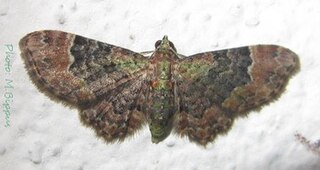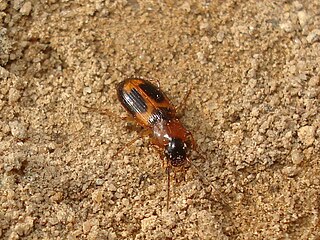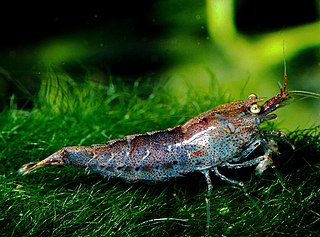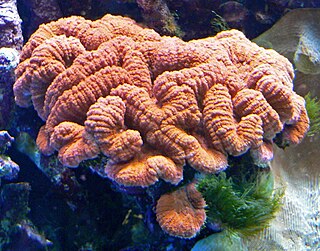
Moths are a polyphyletic group of insects that includes all members of the order Lepidoptera that are not butterflies, with moths making up the vast majority of the order. There are thought to be approximately 160,000 species of moth, many of which have yet to be described. Most species of moth are nocturnal, but there are also crepuscular and diurnal species.

Helcogramma is a genus in the triplefin family Tripterygiidae. The blennies in the genus Helcogramma are found throughout the Indo-Pacific and in the South Atlantic Ocean off the islands of St Helena and Ascension.

Chloroclystis is a genus of moths in the family Geometridae first described by Jacob Hübner in 1825.
Eriopithex is a genus of moths in the family Geometridae first described by Warren in 1896.

Badister is a genus of ground beetle in the family Carabidae native to North Africa, the Near East and the Palearctic, including Europe.

Neocaridina is a genus of atyid shrimp, containing the following species:
Holaspulus is a genus of mites in the family Parholaspididae. There are about 16 described species in Holaspulus.

Eupitheciini is a tribe of geometer moths under subfamily Larentiinae, often referred to as pugs. The tribe was described by Tutt in 1896.
Holaspulus ishigakiensis is a species of mite in the family Parholaspididae.

Ryuthela is a spider genus in the family Liphistiidae.

Lobophyllia, commonly called lobed brain coral or lobo coral, is a genus of large polyp stony corals. Members of this genus are sometimes found in reef aquariums.
Synuchus ishigakiensis is a species of ground beetle in the subfamily Harpalinae. It was described by Morita & Toyoda in 2003.
Eriopithex recensitaria is a moth in the family Geometridae first described by Francis Walker in 1862. It is found in Sri Lanka, Taiwan, on Borneo and in the Australian state of Queensland.
Eriopithex lanaris is a moth in the family Geometridae. It is found in the north-eastern Himalayas, as well as on Peninsular Malaysia, Borneo, Bali, Sulawesi, the Sangihe Islands and in New Guinea and Queensland.
Pararrhynchium is a Palearctic and Indomalayan genus of potter wasps.
Lobophyllia ishigakiensis is a species of coral found in Indo-Pacific waters. It is widespread but uncommon throughout its range. It has a narrow depth range, and is susceptible to coral bleaching and disease. It is also threatened by the global loss of coral reef habitats.
Altererythrobacter is a bacterial genus from the family of Erythrobacteraceae.
Altererythrobacter ishigakiensis is a Gram-negative, non-spore-forming, halophilic and non-motile bacterium from the genus of Altererythrobacter which has been isolated from the coastal area of Okinawa on Japan. Altererythrobacter ishigakiensis produces astaxanthin.
Helcogramma ishigakiensis is a species of triplefin which is endemic to the Ryukyu Islands of southern Japan. It was described by Aoyagi in 1954 as Lepidoblennius marmoratus ishigakiensis. It was synonymised with Helcogramma inclinata by Ronald Fricke in 1997 but its status as a vaild species was reasserted by Satokuni Tashiro in 2014. It is not included in FishBase but is in the Catalog of Fishes.







